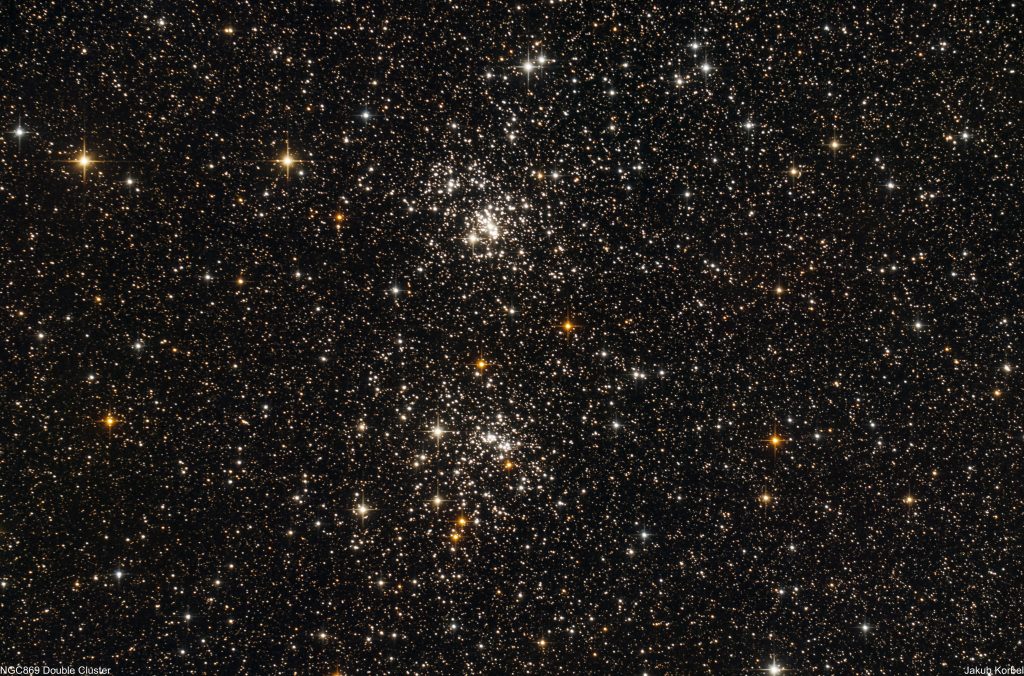Two clusters visually close to each other can be located between constellations Perseus and Cassiopeia. The clusters are relatively young (12 million years) and they are 2700 light-years far from Earth.
The picture was captured during my travel to Karpathos where I had only single wind free night.
I know, the composition should be turned by 90°. I just simply forgot to twist the camera.

Technical details:
| Telescope | Newton 150/600 mm |
| Aperture | 150 mm |
| Focal length | 630 mm |
| Mount | Avalon M-Zero |
| Autoguiding | ZWO 174MM, Guidescope 30 mm |
| Camera | ZWO 071 Pro @-5°C |
| Corrector | Explore Scientific HR |
| Filters | Astronomik L-1 - UV IR Block Filter |
| Exposure | 28x180s, Gain 94, bin 1x1, |
| Date | 2019-09-03 |

Hey man, I love your work. But I wonder : you used to have a mono ccd (moravian instrument I think), and it seems your last pictures were taken with a color camera.
Is there a particular reason that made you abandon the ‘mono + rgb filter’ team ?
Hi Jules. Yes this picture was taken by color camera ZWO ASI071. The reason is that Moravian mono + filter wheel has 2.5 kg and color ASI071 has only 0.4 kg. If I travel I count every gram. Moreover, if I travel, I go to places with very little light pollution, therefore I don’t need narrow band filters and IMHO there is no big difference between mono + RGB and color cameras. The main advantage of mono camera is the possibility of narrow band filters, which allow you to do a decent astrophotography of the nebulae even with light polluted skies.
[…] is beloved by windsurfers and kite surfers. In the end I captured only the Iris Nebula and the Double Cluster. I talked to locals and they told me that the wind should stop at the end of September, so probably […]